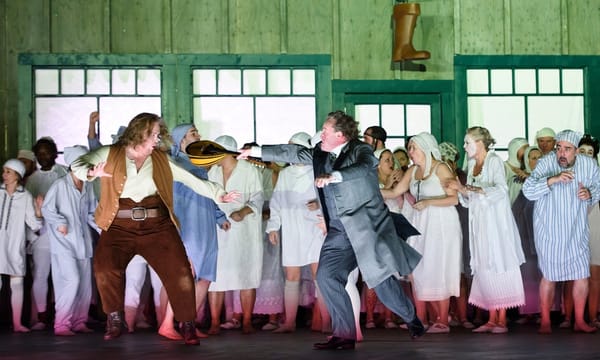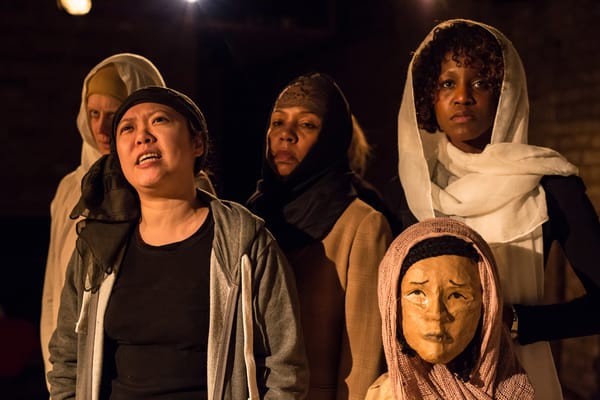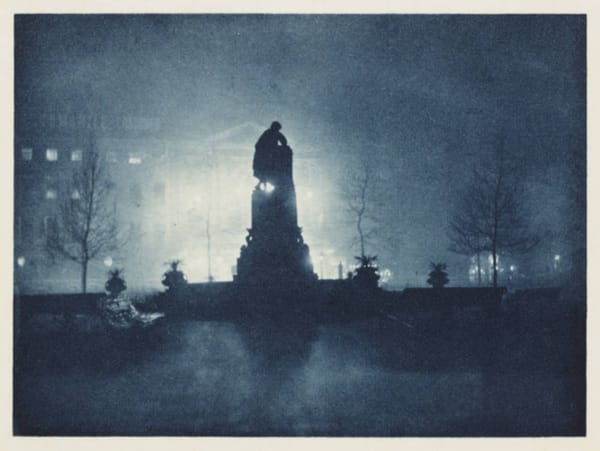Radical Histories: what does it mean to be British today?
Fred Fyles takes in a century of the country’s artistic history at the Hayward Gallery
In the summer of 2014, in response to the hysteria generated by the ‘Trojan Horse School’ scandal, the Education Secretary Michael Gove issued an edict stating that schools in the UK must begin promoting that most nebulous of terms: British Values. In an age when it is just as easy to speak to a friend in Lagos as it is to phone our grandparents in Woking; when foodie culture means that everyone’s palate is globally educated; when people can move through the EU at will, breaking down notions of private borders; what does it really mean to be British?
It is this question that has been posed to seven artist-curators in the Southbank Centre’s show History Is Now, in which the years 1945-2015 are radically reinterpreted, and the cultural legacy of the second half of the 20th Century is celebrated. Does Britishness mean a sleeping video of David Beckham, as it does to Simon Fujiwara? Or perhaps it is best represented by governmental reports on BSE, the offering of Roger Hiorns? Certainly everything in Britain is not peachy keen; this much can be ascertained before you reach the exhibition, when one spies the surface-to-air missile installed on the Hayward Gallery’s roof, ominously pointing to an invisible target.
The missile forms part of the collection of Richard Wentworth, who looks back to his childhood for inspiration; the oldest of all the curators, Wentworth sees the years 1940-60 as a formative period for British culture. The end of the war lead to a widespread, if uneasy, optimism, as Britons took their first new steps into a brave new world of TV sets and polyurethane. This shift towards consumer culture is reflected in Tony Cragg’s work Britain Seen from the North, in which a jumble of plastic flotsam forms the outline of the British Isle; tilted on its side, the country seems prone under the weight of its newly accumulated wealth. It was this optimism that lead to the foundation of the Hayward Gallery, part of the Southbank Centre development created during the Festival of Britain, an irony that cannot be overlooked.
However, not all was peaceful in the land of plenty. While they seemed to be free of the threat of invasion, a vein of violence still ran to the core of British society; we therefore have Henry Moore’s bulbous sculptures, unnerving in their fluidity, and Francis Bacon’s psychological explorations of the human form, in which figures seem to melt into each other. Robert Capa’s shots of the D-Day landings, iconic in their shaky quality, show that we will indeed fight them on the beaches; but Lowry’s scene of a popular sandy shore shows that we will live, laugh, and love on the beaches too.
Whilst free from the threat of invasion, a vein of violence ran to the core of Britain
Perhaps what is at the heart of being British lies in our institutions; the NHS, for example, which is the country’s largest employer, and which forms the centre of Barbara Hepworth’s Hospital Drawings series, part of Wentworth’s display. This idea of institutions is continued by Simon Fujiwara, whose curation of a number of artefacts of Britishness is inspired. Taking as inspiration the fundamental shift from material to immaterial production that occurred during the reign of Thatcher and carried on for the next thirty years, Fujiwara’s collection manages to be both eclectic and focussed.
The role Thatcher played is represented by the costume worn by Meryl Streep in The Iron Lady, a white-washed biopic of the divisive leader who fundamentally altered the British economy; next to it we have a ton of coal, taken from the Minorca Surface Mine, one of the country’s last open coal mines. This smooth slab, which was hewn from the very earth, seems as unfamiliar and unnatural as a piece of alien technology, a fact that is subtly alluded to by Gavin Turk’s Trash, a bronze case of a bin bag. In fact, it is somewhat ironic to have Thatcher represented here; how could she have believed in ‘British Values’ when she stated that “there is no such thing as society”, a claim succinctly refuted by the brooms used by community clear-up teams following the Summer 2011 riots, on display next to Streep’s costume.
Above all, Fujiwara’s collection reveals the contradictions inherent within British society. Our obsession with class and aspirational lifestyles is represented by empty packets of Waitrose herbs and Nigella Lawson salad servers, which are juxtaposed against a place setting for The Clink Restaurant, a charity scheme that employs and trains prisoners. The contrast between physicality and immateriality is shown through Prem Sahib’s Sweat Panel, which creates the illusion of a steamed mirror through the meticulous application of hundreds of resin drops. Towards the end of the exhibition we are presented with a short video. Entitled Imagineering, and produced by the government, it highlights the importance of imagination as a source of wealth. Fujiwara shows us how we have moved, through the years, from coal to creativity, and explores what happens when happiness is treated as just another commodity.
Other curators represent British institutions in different ways, be it in a positive or negative light. Hannah Starkey takes the Arts Council Collection as her starting point; the world’s largest loan collection of British modern and contemporary art, it is the Collection’s wide range of photographs that have provided the inspiration for Starkey’s witty, bleak view of modern Britain. Like Fujiwara, Starkey attempts to portray a country that has fallen in love with the allure of consumerism, contrasting images taken from advertising with grim photos, often in black and white, showing social isolation and alienation.
One of the highlights of Starkey’s collection are Paul Graham’s photographs, taken in social security offices around the country in the mid-80s. With their decrepit atmosphere, the photos highlight – in garish technicolour – those who have been abandoned by a welfare state that promised so much for so many. Elsewhere we have Chris Killip’s images; in one, a woman lies face down on a wooden bench, her skirt being blustered by an invisible wind; in another, a crying child from Tyneside brings his knees up to his face, displaying his worn boots to the camera.
Whilst Starkey shows the worst of Britain, she also shows us some of the best things that come out of the country, including a sense of radicalism that runs deep through the UK like a vein of Welsh coal. Who’s Holding the Baby?, a series of text collages from the Hackney Flashers Collective, highlights the poor childcare provisions for working class women; looking like a precursor of a riot grrrl zine, the black and white text confronts the viewer, in a radical display against authority.
The Hayward shows that Britishness is defined by our shared histories
From this group of radical feminists we move onto another: Christine Voge’s pictures of a Chiswick-based refuge for women. The first of its kind in the UK, the centre was soon overwhelmed, holding up to four times its allocated capacity. These are the selection of Jane and Louise Wilson, whose collaborative collection reinforces the idea that twins often share an uncanny mental connection. Their collection focuses around British conflicts of the 20th Century; unlike the current jingoism on display centred around the centenary of WWII, the Wilsons look much closer to home, focussing on the Irish Troubles and the Greenham Common Women’s Camp, which sprung up in protest to the decision to place cruise missiles at the RAF base. A row of photographs of graffiti make up Conrad Atkinson’s Northern Ireland 1968 – May Day 1975, under which a series of quotes centred around the Northern Irish conflict are printed on orange, white, and green paper. By placing them so close together, Atkinson brings together the personal and the political, showing us the people behind the slogans.
Such British radicalism is also celebrated in John Akomfrah’s selection of BFI-funded films, many of which are experimental in nature; the majority centre around home-grown artists, such as Francis Bacon, Richard Hamilton, and Barbara Hepworth, whose work was inherently ground-breaking. While the majority of the films do seem interesting, they are just too long. The 17 total films on display have a combined running time of over ten hours; while I do have a lot of time for video art, quite frankly there’s only so much one person can take.
The same accusation can be levelled at Roger Hiorns, whose display consists of a collection of research he has done on the Bovine Spongiform Encephalopathy outbreak and resulting media hysteria, which peaked in the mid-90s. The only fitting word I could think of is exhaustive; this is not a compliment. The amount of content that Hiorns is trying to fit into the three rooms is enough to make a serial hoarder embarrassed; along the wall there are scientific reports in plastic wallets, entire TV news programmes on the outbreak, and whole governmental protocols on controlling the outbreak. Hiorns would certainly benefit from another curator, one who could help him cut down his extensive collection, and sadly his section marks the lowest point in the exhibition.
Conceived also as part of the run-up to this year’s general election, the Hayward’s show does indeed succeed in showing that Britishness is defined by our shared histories. It may not show us where we are going, but it certainly shows us where we have been, and – while some curators could do with a more confident hand in limiting their content – is overall a very compelling exhibition. Britain is a huge topic to take on, one whose boundaries are not easily defined, but the 7 artists on display have by-and-large managed to show us that history is, indeed, occurring right now.
History Is Now: 7 Artists Take On Britain is on at the Hayward Gallery until 26th April. Student tickets £8









